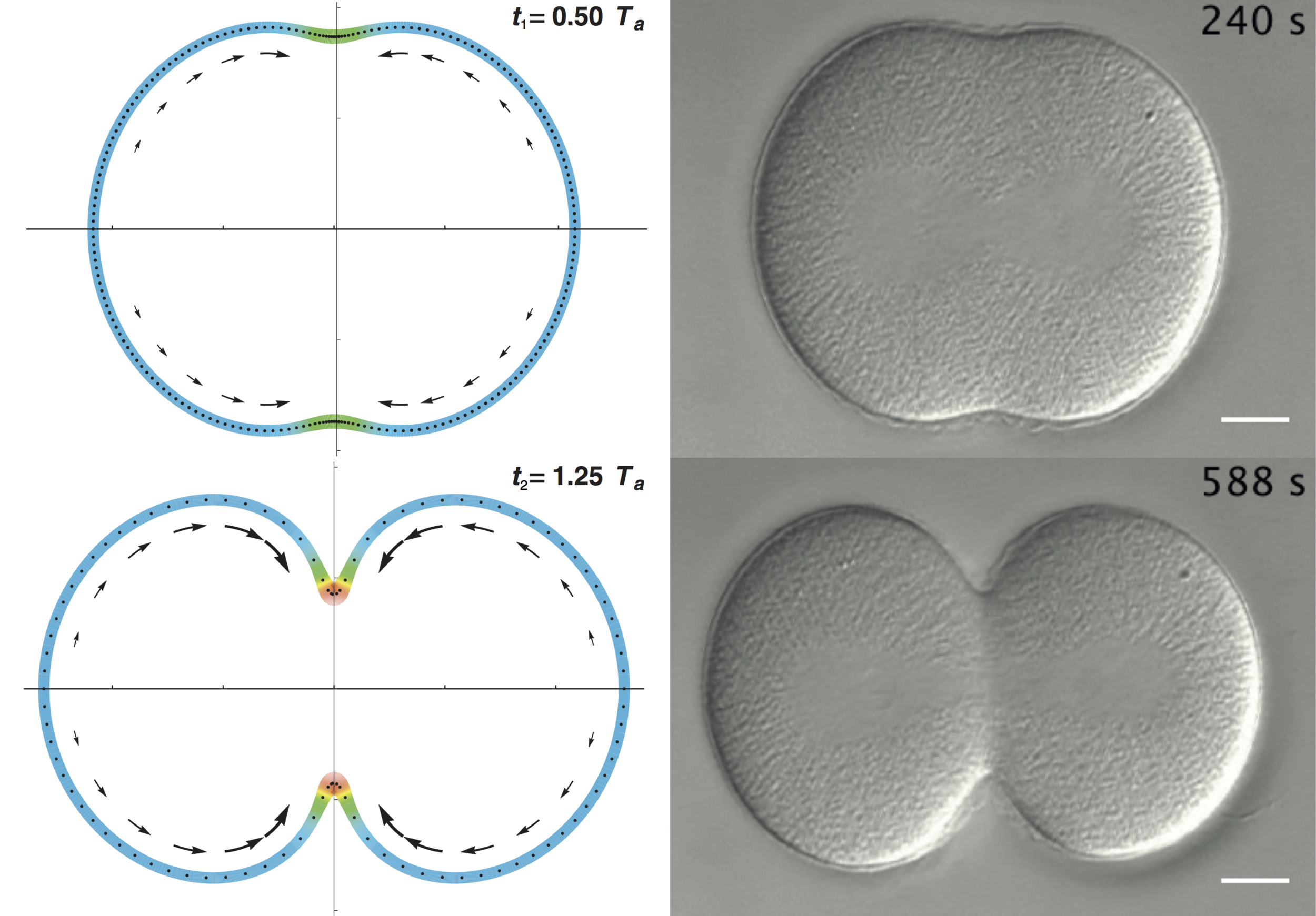Furrow constriction in animal cell cytokinesis
H. Turlier*, B. Audoly, J. Prost and J.-F. Joanny, Biophysical Journal 106, 114-123 (2014).
Cytokinesis is the process of physical cleavage at the end of cell division; it proceeds by ingression of an acto-myosin furrow at the equator of the cell. Its failure leads to multinucleated cells and is a possible cause of tumorigenesis. Here, we calculate the full dynamics of furrow ingression and predict cytokinesis completion above a well-defined threshold of equatorial contractility. The cortical acto-myosin is identified as the main source of mechanical dissipation and active forces. Thereupon, we propose a viscous active nonlinear membrane theory of the cortex that explicitly includes actin turnover and where the active RhoA signal leads to an equatorial band of myosin overactivity. The resulting cortex deformation is calculated numerically, and reproduces well the features of cytokinesis such as cell shape and cortical flows toward the equator. Our theory gives a physical explanation of the independence of cytokinesis duration on cell size in embryos. It also predicts a critical role of turnover on the rate and success of furrow constriction. Scaling arguments allow for a simple interpretation of the numerical results and unveil the key mechanism that generates the threshold for cytokinesis completion: cytoplasmic incompressibility results in a competition between the furrow line tension and the cell poles’ surface tension.
Read more: publisher - preprint
